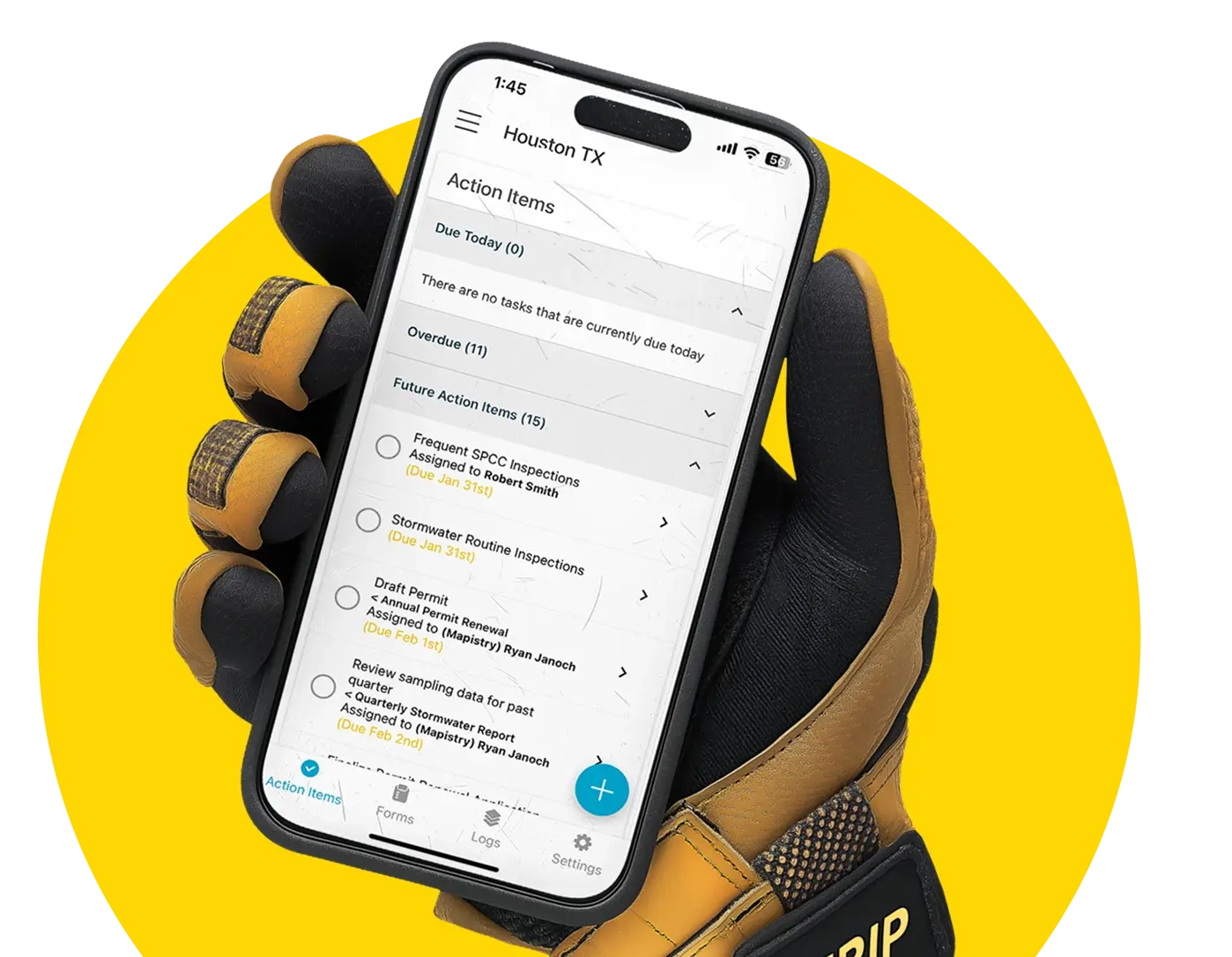How is Mapistry different from EHS software?
If you’re buying environmental software, you’ll inevitably compare providers.
So, how is Mapistry different from EHS software?
Instead of giving you a vague, sales-y answer, we want to use this article to explain what we’re good at, and what you shouldn’t hire us for.
We’ll cover three ways we’re different from EHS software:
- We focus on environmental
- We bring all your tools into one place
- We have in-house environmental experts
Difference #1: We’re terrible at health & safety. We excel in environmental compliance.
Call us crazy for saying we’re terrible at something. But let’s be honest: we can’t possibly be great at everything. Especially when we’re talking about complex fields like environmental, health, and safety, which are all slightly different depending on the state, industry, and size of company you’re in.
Building great software for either environmental, health, or safety is exceptionally hard. Doing it for all three is impossible. Add in Quality, Risk, Sustainability, Ergonomics, ESG…and how can any one software be amazing at the alphabet soup? You get our point.
So we decided to focus our resources on just one of them.
We don’t do safety.
We don’t do health.
We don’t do quality.
We don’t do ergonomics.
But we’ve spent ten years building the best environmental software in the market.

Why does that matter? Let’s take inspections as an example.
You could use EHS software for inspections, right? In theory, yes.
The problem is that most EHS software was originally built for safety. Think OSHA 300 logs, incident tracking, and managing insurance claims.
When you try to complete an environmental inspection using EHS software, you’ll realize it wasn’t supposed to be used that way. Doing inspections in most EHS software systems will look something like this image (vs. what it would look like in Mapistry).

Difference #2: You’ve got all your tools in one place, instead of having stuff EVERYWHERE
The upside of EHS software is consolidating many needs into one platform, which saves money and prevents a jungle of disconnected software systems. In theory, that is a wonderful thing.
In practice, EHS software is primarily built for safety, so environmental capabilities aren’t high on the priority list. You’ll have a compliance calendar. If you are lucky, your team will feign using the basic inspection tools, if they are available.
EHS software vendor teams speak “ETL, CRUD, IDE”, consultants speak “SPCC, EPA, and NPDES”
What about all the other environmental compliance tasks? We’re talking about
- collecting numerical data and monitoring limits
- pulling together records for the inspector
- updating your leadership team
- creating site maps
- etc.
These are typically not supported by EHS software, so you’ll keep doing them manually in spreadsheets, email, and on paper - we like to call this the “stuff everywhere problem”.
You might have a "consolidated system'. But one that’s pretty useless for environmental.
Difference #3: You get onboarded by in-house environmental experts
It’s expensive to build an in-house customer success team with deep expertise in environmental compliance. So most EHS software providers outsource this expertise to third-party consultants. Together with the software vendor, they onboard you onto the new tool and customize it to your needs.
What makes this tricky is that
- Consultants get paid by the hour, not your outcome
- You’re now coordinating one more party
- EHS software vendor teams speak “ETL, CRUD, IDE”, consultants speak “SPCC, EPA, and NPDES”.
This is why we decided to develop both skill sets, software development AND environmental compliance, in-house. Our team shares one goal: Getting you to a successful outcome as quickly as possible.

Don’t settle for EHS software. Try Mapistry instead.
If you haven’t noticed, we’re not the biggest fans of EHS software for environmental. While they kick our a** regarding health and safety, they don’t help environmental teams in 95% of cases.
If you’re curious to learn more, you can tour Mapistry here or book a demo to discuss your application with one of our experts.



.png)
.svg)
